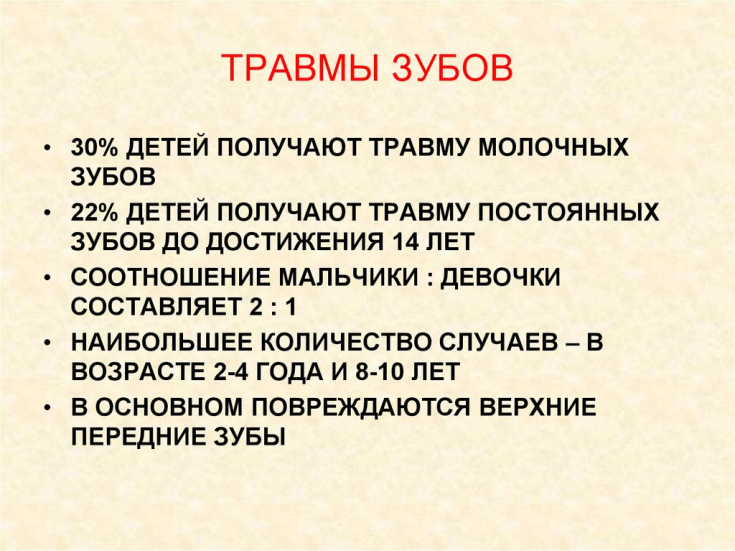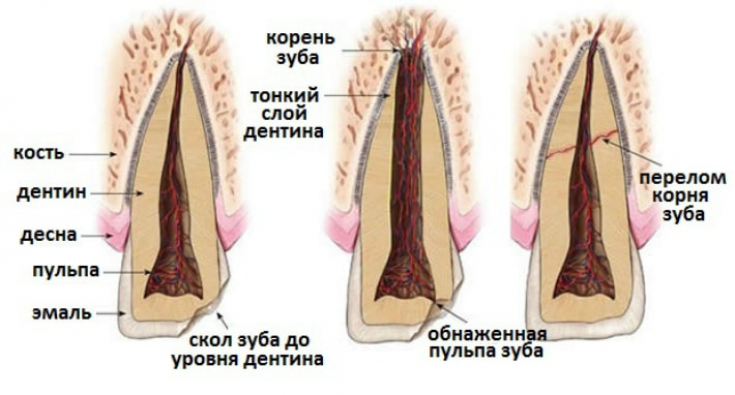Tooth injuries — one of the most common reasons why a generally healthy tooth has to be extracted. According to dentists, in many cases this could have been avoided with proper first aid and timely contact with a doctor.
The most common symptom of injury is a crack in the tooth, which is formed at the time of a fall, jump from a height, hitting the tooth with a hard fragment of food during meals. And if you discover that a tooth has cracked, you should immediately take the right actions that will increase the chances of restoring it.
Cracked Tooth: First Aid Rules
First of all, you should know: in no case should self-diagnosis be carried out and on its basis decide how viable the injured tooth is. This is the most common cause of complications when self-removal of the punctured part, which seems irreparable, is carried out, and an infection is introduced into the root canals.
Even if the integrity of the tooth is truly irreversible, the extraction of the entire tooth or part of it should be carried out by a specialist who will ensure that all the rules of asepsis and antisepsis are observed.

So, what actions should be taken after a tooth injury:
-
Avoid any chewing load. Even if the cracked tooth does not participate in chewing food, at all times until visiting the doctor, give preference to liquid food, cooled or heated to body temperature.
-
If the "articulation" is damaged tooth — one that serves as a support for the language in the formation of the sounds "d", "t"; or others — stick to "silent" mode or limit speech loads to necessary minimum.
-
Rinsing your mouth or putting any kind of compresses on the tooth doesn doesn't make sense. Moreover: such actions increase the likelihood of more severe damage to the tooth by rinsing movements or loads from the compress.
-
Place gauze swabs between intact teeth of the upper and lower jaw so that the injured tooth is "on" weight and has not contact antagonist teeth.
-
If you are experiencing pain in a cracked tooth — Take a proven analgesic or non-steroidal anti-inflammatory drug that you have already used for headache, menstrual or other pain and you are sure it is safe for you.
Read also: To pull out a wisdom tooth or not: a difficult choice
And, of course, see a doctor as soon as possible. A delay of even a few days can be fatal for an injured tooth, as it increases the likelihood of infection of the pulp.
Methods of treatment for a cracked tooth
Unfortunately, even with the right first aid, it is not always possible to save a tooth. During the examination, the dentist assesses the severity of the damage and, in particular, whether the root of the tooth, its musculoskeletal apparatus and the neurovascular bundle are affected.

If the decay has only affected the crown of the tooth, the clinician may choose one of the following treatments:
-
The use of restorative materials. These are special adhesives and cements for dental use, which allow you to reliably seal the crack. Remineralizing compounds may be used before cementing to provide a higher density of the tooth tissues.
Read also: Is it safe to treat teeth under anesthesia: answers to "painful" questions
-
Installation of a crown. If there is a possibility that the crack will expand or is on a tooth that is subjected to high loads, after restoration, a "cap" is put on it, which firmly fixes the tooth .
-
Tooth splinting. This method of treatment is used in cases when, along with the crown part of the tooth, its ligamentous apparatus is slightly damaged. A special construction is superimposed on the injured tooth, which is fixed on the adjacent healthy teeth and provides the injured tooth with immobility. The duration of wearing the splint varies from several weeks to several months — it depends on how badly the ligaments of the tooth are damaged and how quickly they recover.
But even if it is impossible to restore the tooth, there is the possibility of removing the crown with preserving the root and prosthetics on the post or performing simultaneous dental implantation, in which the implant is placed in the hole immediately after tooth extraction. This significantly reduces the engraftment time (compared to other methods of implantation) and allows to immediately fill the void in the dentition with the help of a temporary crown.
Read also: Tooth hurts after filling: what cause and when to go to stomatologist
You might be interested in: How to place a filling.






Add a comment